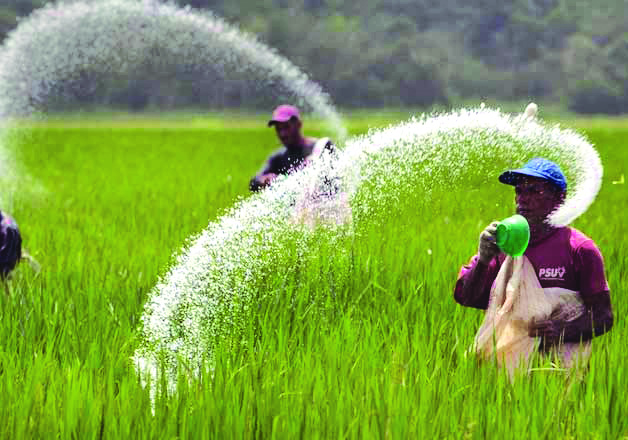Govt mulls ‘non-subsidised’ premier urea to bring down fertiliser subsidy

New Delhi: As the expenditure on fertiliser subsidy is witnessing a manifold increase in the recent past, the government has come out with an innovative plan to bring down the financial assistance on soil nutrients by introducing a premier variety of urea with ‘extra nutrients to make the soil
more fertile’.
According to sources, the Ministry of Chemical and Fertilizers is working on a strategy to introduce a cost-effective non-subsidised variety of urea, which is a step taken for the benefit of farmers and to make the country self-reliant.
The new variety of soil nutrient would be christened as Urea Gold and a bag of it would be having extra nutrients than the conventional urea.
Notably, with the additional allocation of Rs 30,000 crore, the estimated subsidy for the soil nutrients would be a record in the range of Rs 2.45 lakh crore in the current fiscal. With the launch of Urea Gold, the government is aiming to make a significant reduction in fertiliser subsidies.
Though the process of introduction of Urea Gold is at a nascent stage, there have been multiple rounds of discussions with all concerned stakeholders in the recent past.
However, during a recently held meeting with PMO officials over the issue, the Ministry of Chemical and Fertilizers, which is led by Union Minister Mansukh Mandaviya, has been asked to prepare a comprehensive strategy for its launch on the lines of Vande Bharat Express – a premier train service with luxury coaches at an extra cost. According to sources, though the Urea Gold would be enriched with extra soil nutrients, its final price would not be on the lines of Vande Bharat train as the urea is an important component in the agriculture sector.
As per sources, the discussions are going on to fix a standard price slab of Urea Gold ranging between Rs 600-Rs1,000.
Initially, it would not be fully non-subsidised and would be available on the demand of farmers, the sources said, adding that the subsidised urea would continue to be available for farmers even after the launch of the premier urea.
“The objective behind the plan to introduce Urea Gold is to make available quality soil nutrient for improvement of health of soil and reducing the subsidy burden on the national exchequer,” the sources said, adding that its efficacy would be much more than the conventional form of urea, which is available to farmers at a fixed price of Rs 242 per bag (45 kg) against the cost of production of around Rs 2,650 per bag.
It would be the third year in a row that the annual Budget spending on fertiliser would be above Rs 1 lakh crore mark, against a lower range of Rs 70,000 – 80,000 crore in the past few years.
The government has also introduced nano urea, which is available to farmers at a non-subsidised rate.
A 500 ml bottle of nano urea, which has the efficacy equivalent to a bag of urea, is being sold in the retail market at Rs 225, while a bottle of nano-DAP would be sold at Rs 600.
Currently, the cost of one bag of conventional DAP is between Rs 1,350-1,400 while the actual cost of a bag is Rs 4,000. The gap between the actual cost and prices paid by the farmers is borne by the government under the fertiliser subsidy head.



